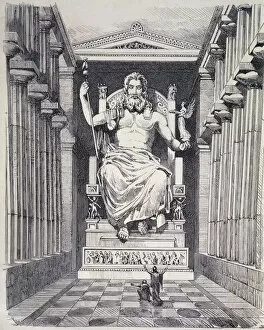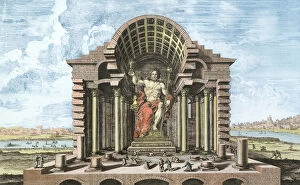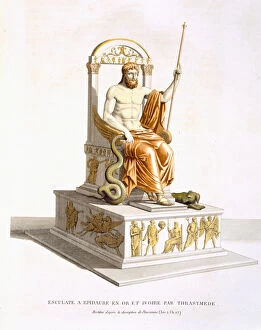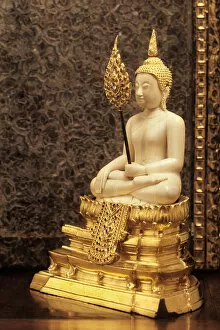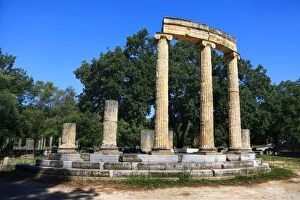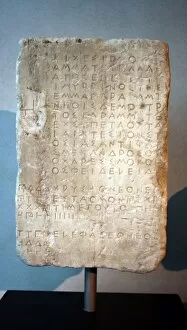Chryselephantine Collection
"Chryselephantine: A Glimpse into the Golden Age of Sculpture" Step back in time to the year 471 BC
For sale as Licensed Images
Choose your image, Select your licence and Download the media
"Chryselephantine: A Glimpse into the Golden Age of Sculpture" Step back in time to the year 471 BC, where a masterpiece was born within the sacred walls of the temple of Olympia. The Chryselephantine statue of Zeus, crafted by the renowned sculptor Phidias, stood as an awe-inspiring testament to human creativity and devotion. This magnificent work of art, made from ivory and gold, depicted Zeus seated on his throne with authority emanating from every inch. Its intricate details and lifelike features transported worshippers into a realm where gods walked among mortals. Not far away in Anglo-Saxon lands around c. 1000 AD, another chryselephantine marvel emerged - the Saxon Crucifix. This exquisite piece blended ivory and gold seamlessly to portray Christ's sacrifice with profound emotion etched upon His face. Phidias' genius continued to captivate generations through his Statue of Olympian Zeus; plate 5 from this collection immortalized its grandeur for all eternity. The sheer scale and meticulous craftsmanship left viewers spellbound as they marveled at this divine representation. In Epidauris, Greece, Aesculapius - God of Medicine - took form in yet another chryselephantine creation that exuded healing energy. Illustrated here is a deity whose presence offered solace and hope amidst affliction. The Lord of Victory emerged next – an ethereal blend of ivory and gold that embodied triumph itself. This symbol became synonymous with conquering obstacles both physical and spiritual throughout history. Goddesses too found their place in this golden era; colossal figures like Athena Parthenos commanded reverence wherever they stood. Their chryselephantine beauty radiated wisdom, strength, and grace – qualities befitting these powerful deities.

